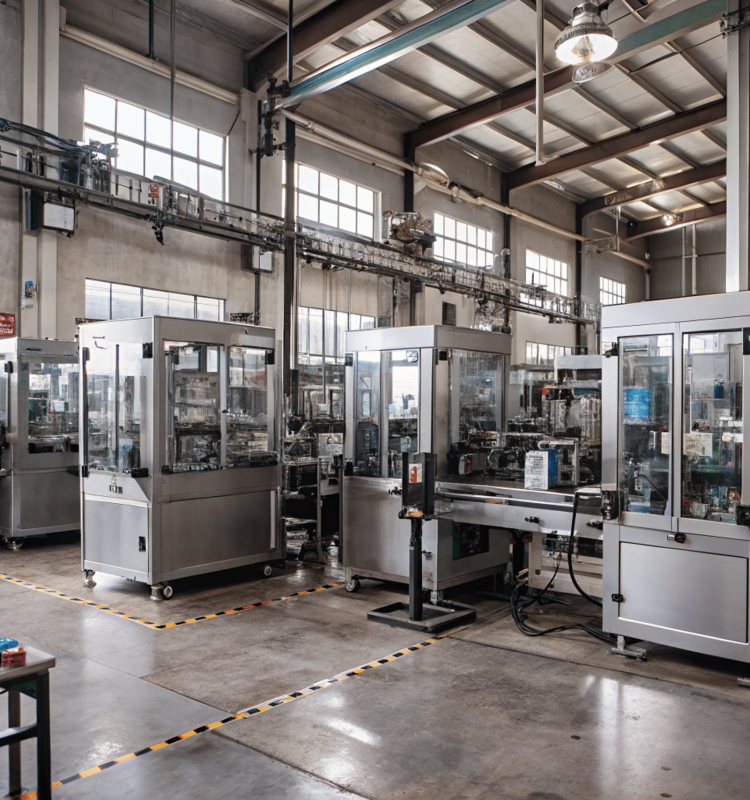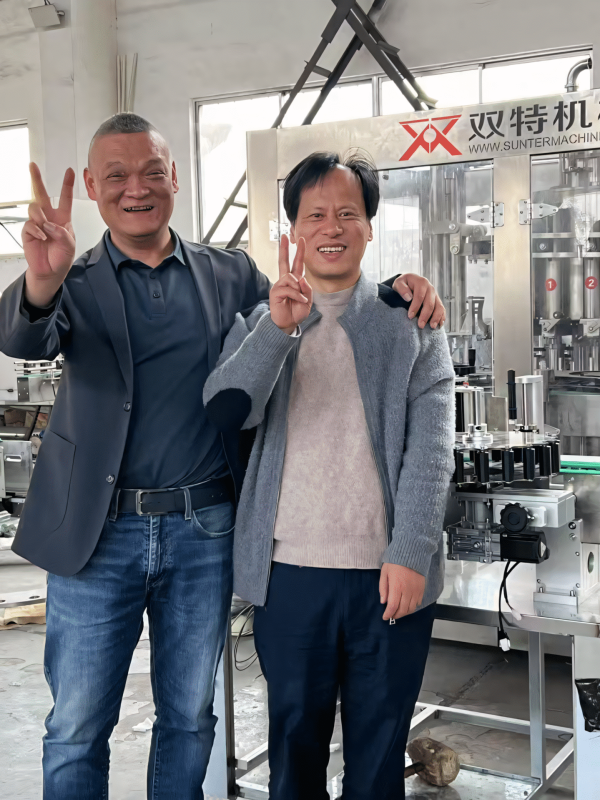Your cosmetic line is growing, but manual filling is slow and inconsistent. The wrong automated system could waste product and money, hurting your brand before you even get started.
An automatic cosmetic filling line is your key to scaling up. It involves selecting equipment based on your product's viscosity and production volume, prioritizing filling precision to ensure quality, and choosing the right technology, like volumetric filling, for efficiency and reliability. This guide will walk you through it.
I remember a startup skincare brand that came to me years ago. They had a fantastic cream but a very tight budget. Their biggest fear was inconsistent filling, which they knew could ruin their reputation.
They thought a fully automated line was just about speed, but I explained it's the foundation of product quality. We worked together to find a solution that guaranteed precision without breaking the bank. That experience taught me how critical these early decisions are, and it's why I want to share what I've learned with you. Let's make sure you get it right from the start.
How to Select the Right Cosmetic Filling Equipment[^1] for Your Specific Needs?
Choosing filling equipment feels overwhelming with so many options. Making the wrong choice can lead to bottlenecks, wasted product, and a machine that doesn't fit your needs.
Select the right equipment by analyzing four key factors: your product's characteristics (like viscosity), your production volume, the required filling precision, and your budget. Also, consider ease of cleaning and the supplier's after-sales support to ensure long-term success.
Dive Deeper: Making the Right Choice
Selecting the perfect filling equipment isn't just about buying a machine; it's about making a strategic investment in your production's future. I always tell my clients to break the decision down into manageable parts. This approach removes the guesswork and ensures you get a machine that works for you, not against you. Let's look at the most critical areas to consider.
Match the Filler to Your Product
The first step is to understand your product's physical properties. A thin, water-like serum and a thick cream require completely different filling technologies. Using the wrong machine will cause issues like inaccurate fills, spills, or even damage to the product.
- Low-Viscosity Liquids (e.g., toners, serums): Gravity or overflow fillers work well. They use gravity to fill containers to a consistent level, which is great for transparent bottles where visual consistency is important.
- High-Viscosity Products (e.g., creams, gels, lotions): Piston or pump fillers are the industry standard. They use a piston to pull in a specific volume of product and then push it into the container. This method is highly accurate and handles thick substances without a problem.
Assess Your Production Scale
Your current and projected production volume will determine whether you need a manual, semi-automatic, or fully automatic machine. It's easy to over-invest, but it's also costly to be under-equipped. I've seen many businesses create bottlenecks by choosing a machine that can't keep up with their growth.
| Production Level | Machine Type | Key Benefits |
|---|---|---|
| Low (Up to 500 units/day) | Manual Filler | Low initial cost, perfect for startups and small test batches. |
| Medium (500–5,000 units/day) | Semi-Automatic Filler | A great balance between cost and improved efficiency. |
| High (5,000+ units/day) | Fully Automatic Filler | Offers high speed, maximum consistency, and minimal labor. |
How Does Cosmetic Liquid Filling Precision Impact Product Quality?
You might think a tiny variation in fill volume doesn't matter. But these small inaccuracies add up, leading to wasted product, customer complaints, and a damaged brand reputation.
High filling precision is crucial for product quality. It ensures every customer gets the exact same amount of product, eliminates costly waste from overfilling, and prevents legal issues from underfilling. It also helps maintain product stability and efficacy, building customer trust.
Dive Deeper: Why Precision is Non-Negotiable
In my 20+ years in this industry, I've seen brands succeed or fail based on their commitment to quality. And in the cosmetics world, quality starts with consistency. Filling precision isn't just a technical detail; it's a direct reflection of your brand's promise to the customer. When every jar or bottle has the exact same amount of product, you're telling your customers that you care about quality down to the last drop.
The Financial and Brand Cost of Inaccuracy
Inaccurate filling hits your business from two sides. First, there's the direct financial loss. Overfilling, even by a tiny amount, means you are giving away free product with every single unit. It might seem small, but over a run of 10,000 units, it adds up to a significant cost. Underfilling is just as bad. It can lead to customer complaints, bad reviews, and a loss of trust that is very hard to win back. I once worked with a client who invested in a high-precision filler and improved their fill accuracy to over 98%. This single change led to a huge cut in their material costs and boosted their profit margins significantly.
Ensuring Product Integrity and Safety
For many cosmetic products, especially those with active ingredients, the formulation is a precise science. Inaccurate filling can throw off the ratio of ingredients in the final package, potentially affecting the product's efficacy and stability. Furthermore, incorrect headspace in a container—the space between the product and the lid—can impact the product's shelf life by exposing it to more or less air than intended. Inconsistent filling doesn't just look bad; it can compromise the very quality and safety of the product you've worked so hard to create.
What are the Advantages of Volumetric[^2] Filling in a Cosmetic Production Line?
With different filling technologies available, it's hard to know which is best. Choosing an inflexible or inefficient method can slow down production and struggle with different product types.
Volumetric filling is a top choice for cosmetics because it is highly precise, extremely versatile for various viscosities, and very efficient. Its simple design also makes it easy to clean and maintain, offering a reliable and economical solution for your production line.
Dive Deeper: The Power of Volumetric Filling
When clients ask me for a reliable, all-around filling solution for cosmetics, I often point them toward volumetric fillers, especially piston fillers. The principle is simple but incredibly effective: a piston draws a precise volume of product into a cylinder and then dispenses it into the container. This method offers a fantastic combination of accuracy, flexibility, and speed, which is why it's a favorite in the cosmetics industry.
Unmatched Precision and Versatility
The biggest advantage of volumetric filling is its accuracy. By precisely controlling the piston's stroke, the machine dispenses the same amount of product every single time. This consistency is vital for maintaining quality and controlling costs. What makes it even more valuable is its versatility. The same machine can often handle a wide range of product types.
- Thin Liquids: Can be filled quickly and accurately.
- Thick Creams and Gels: The power of the piston can easily handle viscous products that would be a problem for other filler types.
This flexibility is a huge asset for brands that have a diverse product line or plan to launch new products in the future.
Efficiency in Production and Maintenance
In a fast-paced production environment, efficiency is everything. Volumetric fillers are designed for high-speed operation, helping you meet demand without sacrificing quality. But efficiency isn't just about speed; it's also about uptime. The mechanical simplicity of most volumetric fillers makes them both reliable and easy to maintain. They can be disassembled, cleaned, and reassembled quickly, which is crucial for cosmetic production where hygiene is paramount and product changeovers are frequent. This combination of speed, reliability, and easy maintenance makes volumetric filling a very cost-effective solution in the long run.
Conclusion
Choosing the right automatic filling line by focusing on precision and suitable technology like volumetric filling is key to boosting quality, cutting costs, and building a trusted cosmetic brand.
[^1]: Discover more cosmetic filling equipments.
[^2]: Learn more about the conception of volume.




